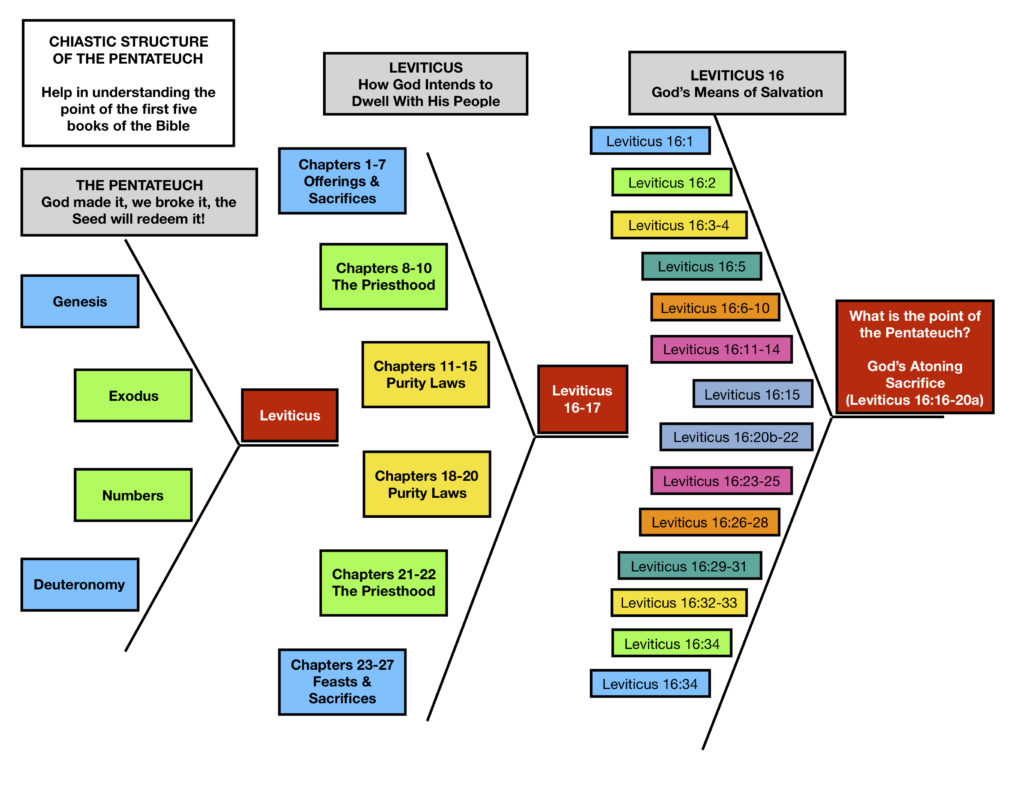This past Wednesday we began our new time together of sharing a meal, studying the Word of God, and encouraging one another in it. I opened our time of teaching mentioning how often we treat the Old Testament like a haunted house tourist attraction.
Sure. It sounds like fun and something we’ll enjoy, but once we get inside we become disoriented, confused about where to go next and scared of what is underneath the sheet in the corner.
I wonder if you’ve ever felt that way? I know that I certainly have, especially in reading the first five books of the Bible — known as the Pentateuch. It’s like we open our Bibles to page one, and many of us see a sign that says “Beware of the Pentateuch!” But I remember when that sign disappeared and all my hesitancies gave way to excitement and hopefulness.
It happened when I began to understand that the Pentateuch, and the Old Testament, and the whole Bible for that matter, is one big story — the story of God’s redeeming a people so that He may dwell with them, displaying His glory and goodness in all the created universe.
This is one of the central themes of God’s Word.
One of the ways we see this is through zooming out and seeing how the Bible is put together and organized in order to help us understand the main point. This is where knowing what a “chiasm” is becomes really helpful.
A “chiasm” is a literary device where ideas/truths are presented and then repeated in reverse order. The result is a “mirror” effect as the ideas/truths are “reflected” back in a passage. Each idea is connected to its “reflection” by a repeated word, often in a related form. You can see how that’s done in the chart below.
When we open our Bibles, we find the original authors, under the inspiration and guidance of the Holy Spirit, often wrote in this way. Not just in short passages, but in whole books and even in whole collections of books.
But what’s the point in writing like this? The point is simply to direct the readers gaze to the center, to the thing at the very center of the passage, the thing that has no mirror, no reflection of itself. The point of writing in a chiastic structure is to direct our gaze at one central truth, above all the others, to which all the others point.
This is exactly what we find in the first five books of the Bible, and I believe seeing it, and chewing on it can help us learn to love the Pentateuch, instead of running from it in horror. Below I have labored to put together an extended chart so that you can see this. First, you find the chiastic structure of Genesis, Exodus, Leviticus, Numbers and Deuteronomy, showing Leviticus to be the central piece of the Pentateuch (probably not your first guess for the main point, right?). Then, within the book of Leviticus we find another chiastic structure as God lays out His means for how His people can prepare for His dwelling among them. This all culminates in Leviticus 16-17, the Day of Atonement. And it’s there, in Leviticus 16, that we find the final chiastic structure. As we mirror our way through the chapter, we find the centerpiece is Leviticus 16:16-20a.
“Thus he shall make atonement for the Holy Place, because of the uncleannesses of the people of Israel and because of their transgressions, all their sins. And so he shall do for the tent of meeting, which dwells with them in the midst of their uncleannesses. No one may be in the tent of meeting from the time he enters to make atonement in the Holy Place until he comes out and has made atonement for himself and for his house and for all the assembly of Israel. Then he shall go out to the altar that is before the LORD and make atonement for it, and shall take some of the blood of the bull and some of the blood of the goat, and put it on the horns of the altar all around. And he shall sprinkle some of the blood on it with his finger seven times, and cleanse it and consecrate it from the uncleannesses of the people of Israel. And when he has made an end of atoning for the Holy Place and the tent of meeting and the altar…”
(Leviticus 16:16–20 ESV)
In these verses we are told of one central truth, after drilling down through books, sections and chapters, we come to the reality of what we need to dwell in the presence of a holy and perfect God. What is it?
Atonement.
This is not only the centerpiece of the Pentateuch, this is the centerpiece of our faith. That for us and for our sins, we needed a Lamb without blemish to die in our place so that we may be cleansed and washed pure. This is what the Pentateuch points ahead to and we find fulfilled in the coming of Jesus, fully God and fully man.
“For if the blood of goats and bulls, and the sprinkling of defiled persons with the ashes of a heifer, sanctify for the purification of the flesh, how much more will the blood of Christ, who through the eternal Spirit offered himself without blemish to God, purify our conscience from dead works to serve the living God.”
(Hebrews 9:13–14 ESV)
So give the chart a look over and be encouraged that God guided the hand of Moses so long ago to point us through the dark crevices and uncertain corners of the Pentateuch to the bright, shining light of what God would do, what God would provide, so that He might dwell among His people forevermore.



